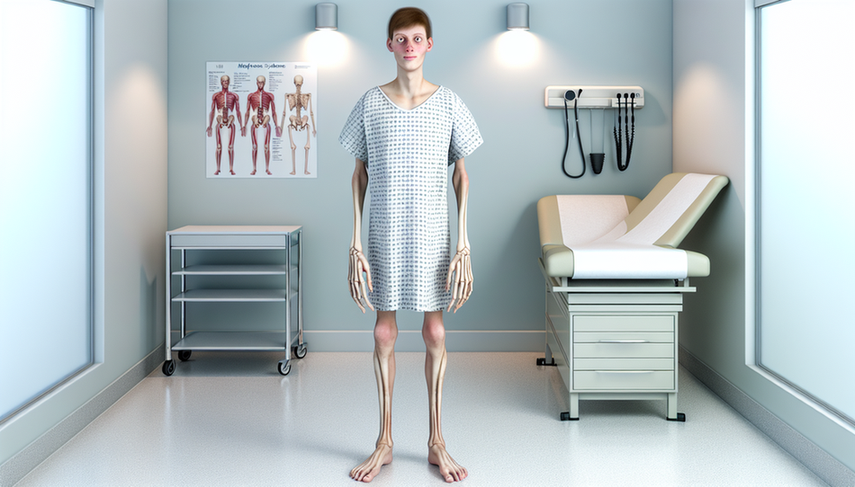Marfan Syndrome: Detecting Skeletal Signs and Differentiating from Homocystinuria with Echocardiogram Insights

Marfan syndrome is a genetic connective tissue disorder that affects multiple body systems, including the skeletal, ocular, and cardiovascular systems. Early detection of skeletal signs is crucial to prevent severe complications, such as aortic dissection. However, the differentiation from homocystinuria, a metabolic disorder that may present similar features, is essential for accurate diagnosis and appropriate treatment.
Detection of Skeletal Signs in Marfan Syndrome
The skeletal signs of Marfan syndrome include tall stature, disproportionately long limbs, pectus excavatum, and scoliosis. These signs can be detected through a detailed physical examination and anthropometric measurements. A reported case of a female collegiate basketball player highlighted the importance of early detection through a simple screening procedure, comparing arm span to the individual's height. This method can be a valuable tool for coaches and sports physicians in identifying at-risk individuals [1].
Differentiation from Homocystinuria
Homocystinuria is a metabolic disorder that can present a phenotype similar to Marfan syndrome, including lens dislocation and skeletal anomalies. However, it is differentiated by the presence of elevated homocysteine levels in the blood. A case of late diagnosis of classical homocystinuria in an adult, who initially presented with lens subluxation, underscores the need for biochemical studies to confirm the diagnosis [2]. Homocystinuria may also be associated with mutations in the CBS and MTHFR genes, necessitating a genetic approach for its diagnosis and management.
Conclusions
Early detection and accurate differentiation between Marfan syndrome and homocystinuria are fundamental for the proper management of these patients. The use of simple screening tools, such as comparing arm span to height, along with biochemical and genetic studies, can significantly improve clinical outcomes. Additionally, the echocardiogram is an essential tool for evaluating cardiovascular complications associated with Marfan syndrome.
Referencias
- [1] Marfan syndrome in a female collegiate basketball player: a case report.
- [2] Classical familial homocystinuria in an adult presenting as an isolated lens subluxation.
Created 13/1/2025
